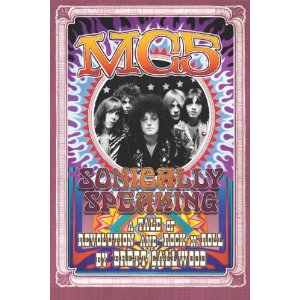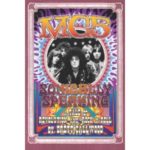
Wayne State University Press
With any luck, the average reader won’t write Brett Callwood’s The Stooges – Head On off as “another Iggy book.” It isn’t.
Don’t fret: there’s plenty of Iggy to be found. An in-flight read of Callwood’s MC5 bio Sonically Speaking won Mr. Pop’s blessing and cooperation on this project, making for some straight-from-the-Iggy moments. But sitting alongside him on that same flight was original Stooge guitarist Ron Asheton, who was equally impressed with Callwood’s writing and agreed to talk with him as well. And therein lies the treasure in this tale of a band who never sold many albums for themselves, yet pummeled the world with a sound that they helped found: Callwood’s story is that of a band.
Ron Asheton (who passed away in January of 2009) is both hero and human being in Callwood’s book, a guitarist who shunned flashy technique for sonic marrow; a man who died alone. (Sadly, the Stooges were finally inducted into the Rock & Roll Hall of Fame a year after Ron Asheton died, having been repeatedly ignored.) Callwood’s conversations with Asheton cover everything from his life pre-Stooges to his fascination with (and involvement in) horror B-movies later in life.
Ron’s brother (and Stooges drummer) Scott Asheton has seldom been heard from over the years, but he did consent to speak with Callwood after his brother’s passing. So did legendary Minutemen/fIREHOSE bassist Mike Watt, who has held down the bottom end for The Stooges since their reformation in 2003 and treats his role with the reverence it deserves. Scott Thurston, whose keyboard work added an extra degree of danger to Raw Power contributes to Callwood’s story, as does guitarist James Williamson. Some Stooges followers regarded Williamson as the guy who bumped Ron Asheton out of his lead role back in the 70s, but it was Williamson who was invited back in 2009 to keep the fire burning after Asheton’s passing. (Williamson comes across as having nothing but respect for his former bandmate.)
The paths taken by the individual members in the wake of The Stooges’ implosion in ’74 are tracked – as are the circumstances leading up to their 2003 reunion (for which J Mascis happened to be the catalyst, in a roundabout way) and beyond. Callwood is a fan, without question, but he applies his feelings about the band in the proper manner – getting to the heart of things with neither too much gloss or muck. This is required reading for Stooge fans.



No Comments comments associated with this post